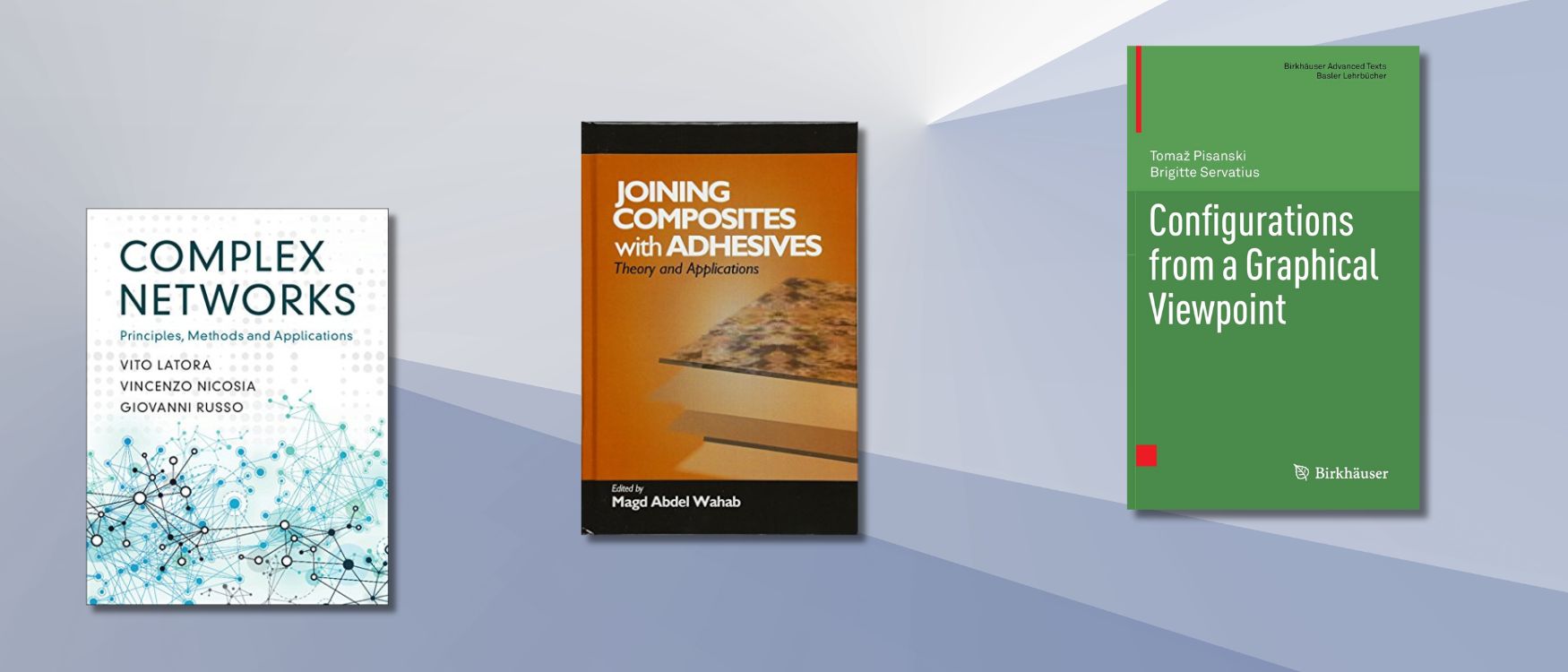
2023-08-03 15:14
New books available in the Library and Information Centre
Complex Networks: Principles, Methods and Applications
Vito Latora; Vincenzo Nicosia; Giovanni Russo
Networks constitute the backbone of complex systems, from the human brain to computer communications, transport infrastructures to online social systems and metabolic reactions to financial markets. Characterising their structure improves our understanding of the physical, biological, economic and social phenomena that shape our world. Rigorous and thorough, this textbook presents a detailed overview of the new theory and methods of network science. Covering algorithms for graph exploration, node ranking and network generation, among others, the book allows students to experiment with network models and real-world data sets, providing them with a deep understanding of the basics of network theory and its practical applications. Systems of growing complexity are examined in detail, challenging students to increase their level of skill. An engaging presentation of the important principles of network science makes this the perfect reference for researchers and undergraduate and graduate students in physics, mathematics, engineering, biology, neuroscience and the social sciences.
Joining Composites With Adhesives: Theory and Applications
edited by Magd Abdel Wahab
Presented in this volume is a detailed scientific analysis of strategies for adhering composite materials to plastics, concrete, metals, and wood, as well as to other composites, using a variety of adhesives. The theory and analysis of composite bonding with adhesives are explained, along with information on adhesive formulation and selection, material preparation, joint geometry and joint design.Attention is given to how different types of adhered composite joints are empirically tested, e.g., for strength and under stress, and how models of joints with adhesives are developed. The book includes an intensive discussion of the uses of adhesives for composite repair. Part two focuses on applications of adhesive composite bonding in aircraft, automobiles, buildings, ships, railroads and dental restoration.
Configurations from a Graphical Viewpoint (Birkhäuser Advanced Texts Basler Lehrbücher)
Tomaz Pisanski; Brigitte Servatius
Configurations can be studied from a graph-theoretical viewpoint via the so-called Levi graphs and lie at the heart of graphs, groups, surfaces, and geometries, all of which are very active areas of mathematical exploration. In this self-contained textbook, algebraic graph theory is used to introduce groups; topological graph theory is used to explore surfaces; and geometric graph theory is implemented to analyze incidence geometries.
After a preview of configurations in Chapter 1, a concise introduction to graph theory is presented in Chapter 2, followed by a geometric introduction to groups in Chapter 3. Maps and surfaces are combinatorially treated in Chapter 4. Chapter 5 introduces the concept of incidence structure through vertex colored graphs, and the combinatorial aspects of classical configurations are studied. Geometric aspects, some historical remarks, references, and applications of classical configurations appear in the last chapter.
With over two hundred illustrations, challenging exercises at the end of each chapter, a comprehensive bibliography, and a set of open problems, Configurations from a Graphical Viewpoint is well suited for a graduate graph theory course, an advanced undergraduate seminar, or a self-contained reference for mathematicians and researchers.
